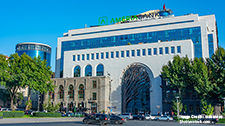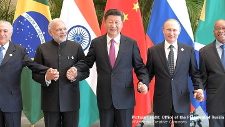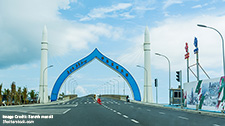The Belt and Road Initiative

First announced by Chinese President Xi Jingping in September 2013, the Belt and Road Initiative (formerly ‘One Belt One Road’ (‘OBOR’; Yi Dai, Yi Lu; 一带一路)), now sets out China’s ambitious foreign policy objective for the 21st century. It embodies an integrated development framework consisting of a continental ‘Silk Road Economic Belt’ and littoral ‘Maritime Silk Road’. Through the guidance of these economic corridors it provides a comprehensive framework of regional cooperation and development programs spanning from China to Western Europe. In totality BRI provides a vision encompassing over 60 countries with a combined population exceeding 4 billion people throughout Central Asia, the Indian Ocean Littoral and Europe. Under the initiative, Beijing takes the lead in the cooperative promotion of local and trans-continental infrastructure development; policy coordination; trade facilitation; and cultural exchange. As a comprehensive, multi-tiered project, BRI builds on a series of multilateral and bilateral funding schemes and state policy loans to both public and private sector partners. OBOR sets out an ambitious vision with profound economic, political and social potential impact.
BRI sets out a grand vision. However, in order to successfully realize a project of such scale and ambition, a framework for effective policy development and topical expertise is indispensable. The Stockholm China Center at ISDP provides this framework. Recognising that the world is increasingly multi-polar, ISDP considers international engagement the only viable strategy and policy direction. The Belt and Road Initiative provides Europe with a unique opportunity from which to take up this challenge and become part of inclusive solutions across Eurasia and the Indian Ocean littoral. As a hub for China-oriented research, with extensive networks throughout the Central- and East Asian political environment, the Stockholm China Center at ISDP is the portal preparing Sino-European relations for the The Belt and Road era.
Related News
Related Publications
-
Armenia and the Belt and Road Initiative: Perspectives from Europe, the Caucasus, and Central Asia
This co-edited book analyses the opportunities and challenges enabled for Armenia by China’s Belt and Road Initiative (BRI) in the framework of economic cooperation, policy diversification, social inclusion, and regional […]
-
India’s BRICS Balancing Act
KEY TAKEAWAYS For India, BRICS is an avenue to promote its global leadership, strategic autonomy and multipolar vision. India’s relations with anti-U.S. BRICS states like Russia and Iran complicate U.S.-India […]
-
China’s Great Retreat: Unpacking the Boom, Bust, and Strategic Withdrawal from Africa
China’s presence in Africa, once seen as a juggernaut of foreign investment and aid, is now experiencing an unmistakable and sharp decline. For the better part of two decades, China […]
-
The Climate Crisis in Tibet: The Dalai Lama’s Warning
Earlier this year, at the ninth International Conference of Tibet Support Groups (TSGs) – a political advocacy meeting for raising awareness about Tibetan issues – held in Brussels, with over […]
-
Maldives Walking Tight Rope between India and China
Like all the South Asian small states, the Maldives has been subjected to great power politics. There are five principles of Maldives’ foreign policy (mostly reciprocating with India’s ‘Panchsheel’) and […]




